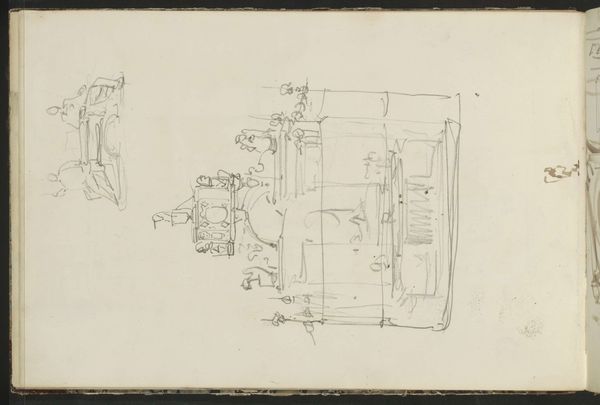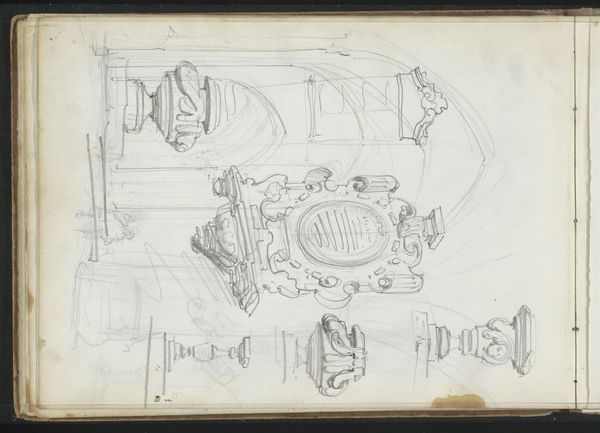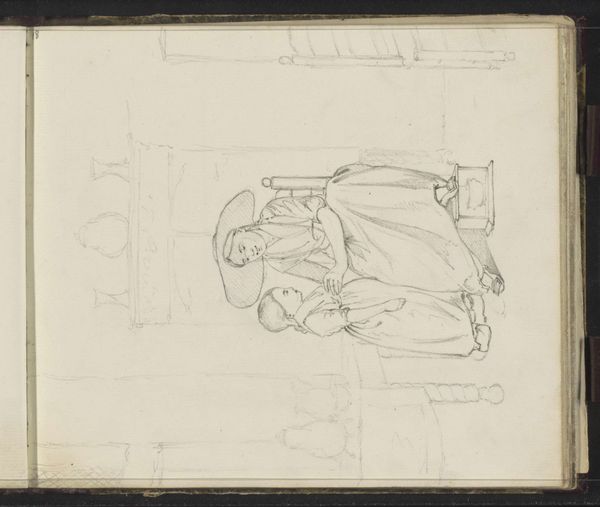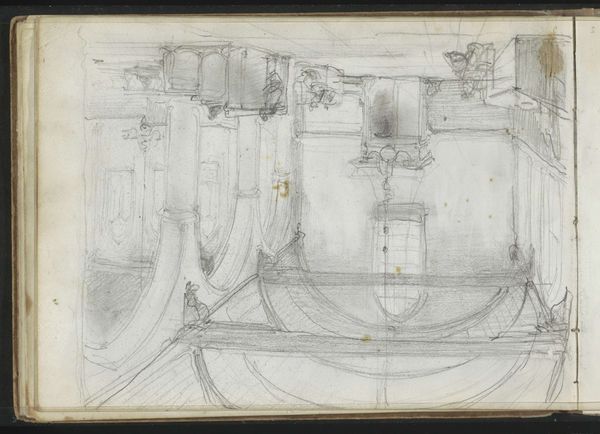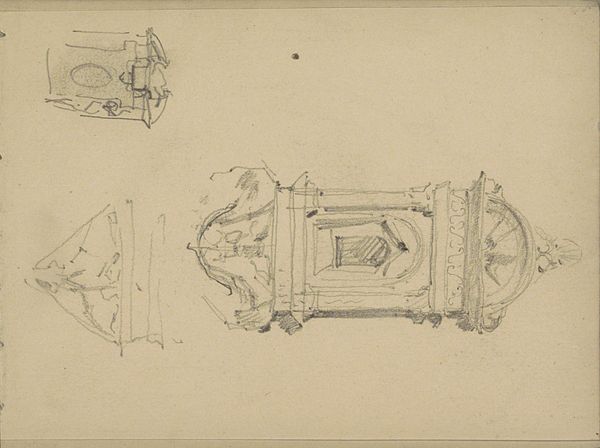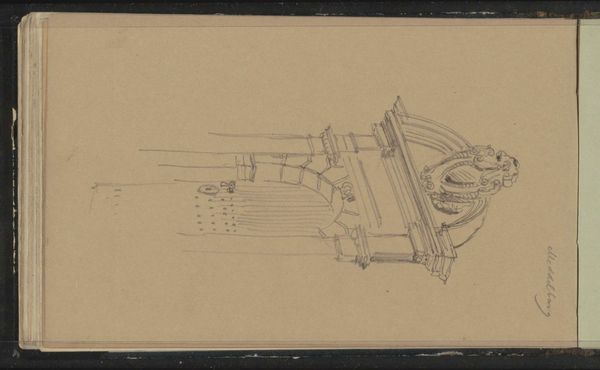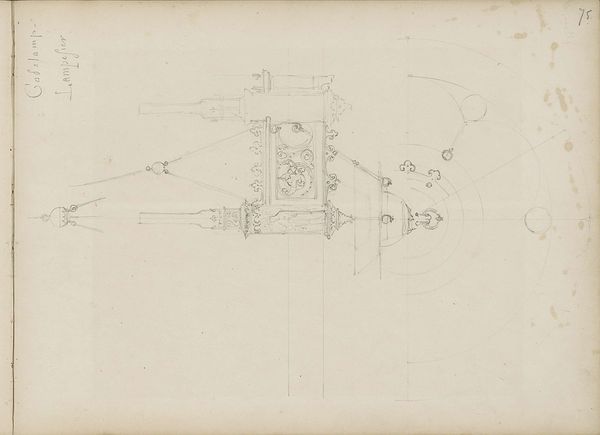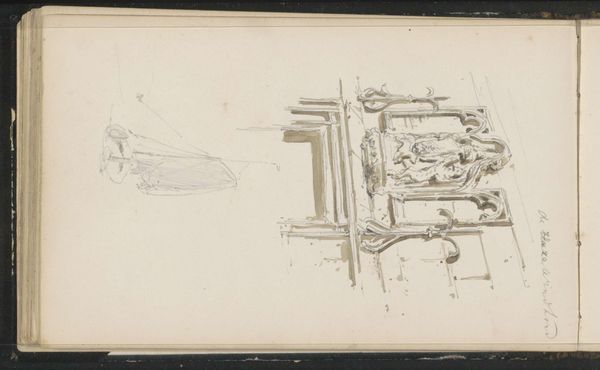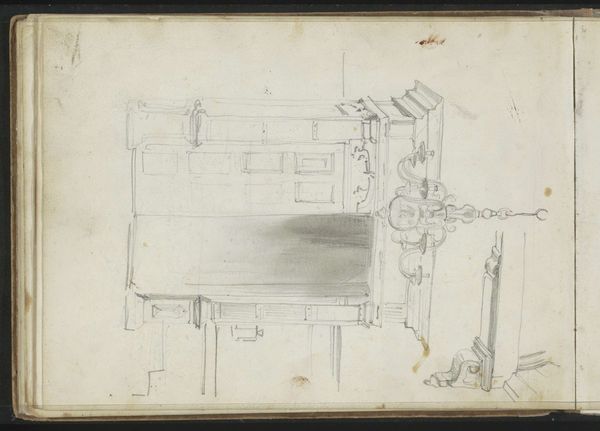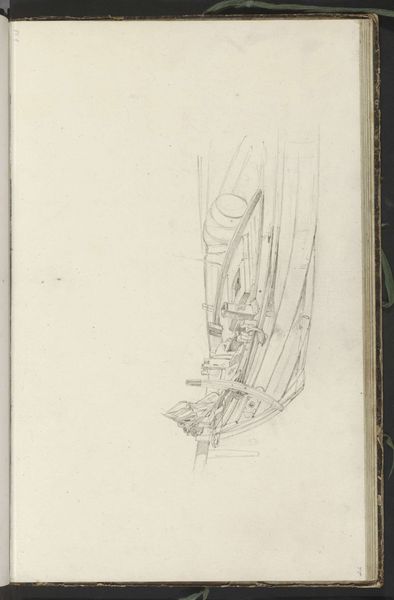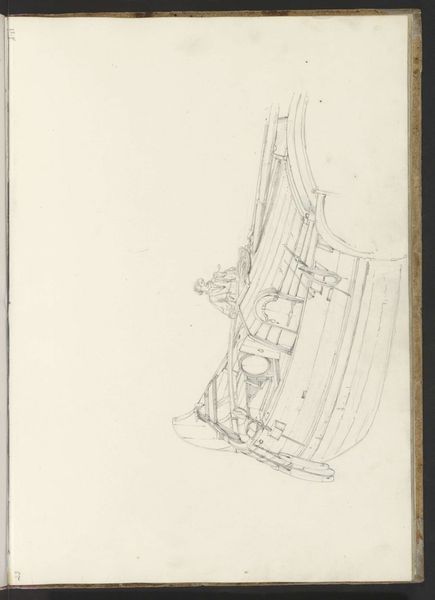
drawing, pencil
#
drawing
#
landscape
#
pencil
#
realism
Copyright: Rijks Museum: Open Domain
Curator: Looking at this pencil drawing, dating from between 1827 and 1891, we see Johannes Bosboom’s “Wall Decoration from a Church Interior,” housed here at the Rijksmuseum. Editor: My initial impression is the lightness. Despite depicting a heavy, ornate architectural element, Bosboom’s rendering feels almost weightless, hovering on the page. You can almost hear the echoes in the empty space. Curator: Bosboom was particularly interested in ecclesiastical architecture and church interiors. It's a pencil drawing, of course, so material minimalism reigns. Still, the realism he employs hints at broader questions concerning artistic autonomy versus commissioned work within religious institutions of his time. Editor: Absolutely, it highlights how the church functioned as a patron, and how that affected the labor involved in art production and its associated craftsmanship. Curator: These drawings served, in a way, as preparatory sketches. We need to consider the church's architectural details as a marker of religious power, both constructing and broadcasting societal values during the 19th century. It invites questions about viewership – how these church spaces influence behaviours. Editor: And thinking of pencil as medium, this could suggest a preliminary idea or a study, potentially pointing towards mass-produced imagery, not inherently deemed “high art” but serving a communal, didactic purpose. Curator: Precisely. The church interior itself becomes a designed experience influencing public perception and piety. And Bosboom, documenting this, places himself within that visual economy. Editor: So we can look beyond aesthetic judgments, asking ourselves how this form relates to society, revealing networks of production, skill, patronage. Curator: Examining it closely offers a view into both artistic creation and cultural functions, really emphasizing how art, in all forms, shapes us. Editor: A testament that even preliminary work illuminates production dynamics that transcend the drawing's humble means.
Comments
No comments
Be the first to comment and join the conversation on the ultimate creative platform.
